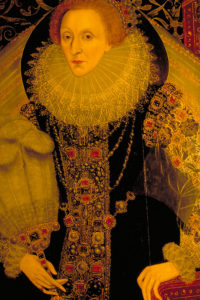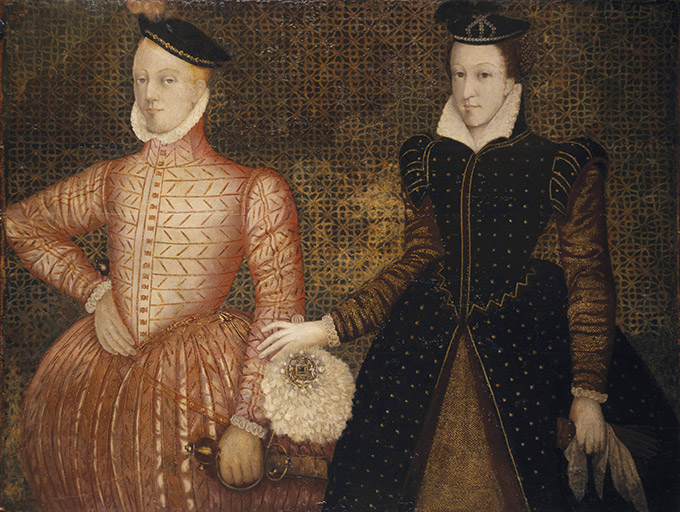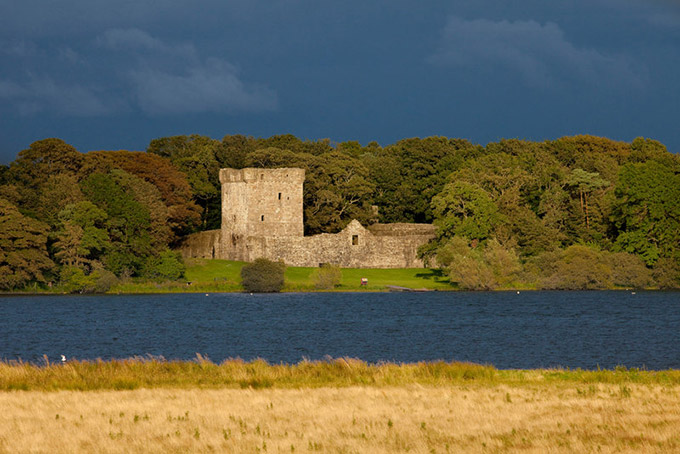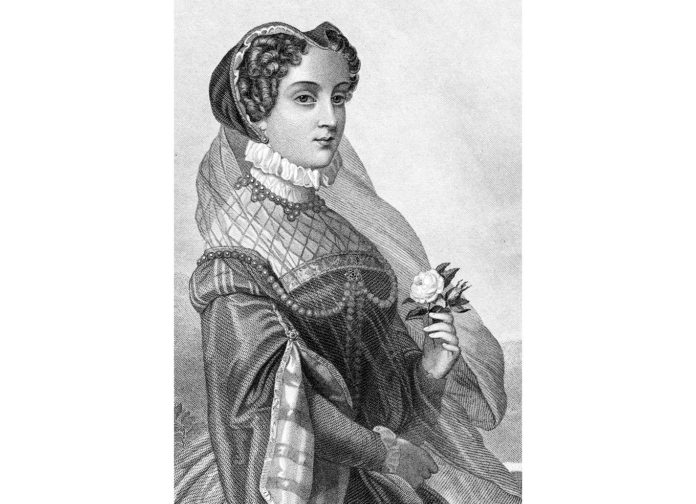The life of Mary, Queen of Scots was dramatic. From the day her father died, when she was a week old, to her death at the hands of an English executioner 45 years later, drama, intrigue and danger dogged her steps. Melita Thomas of Tudor Times looks at her life
Heir to the throne
Mary was born in December 1542 to James V of Scotland and Marie of Guise, during a war with Henry VIII of England. Sickening after defeat at Solway Moss, James died, leaving Mary as his heir. Immediately, two factions sought to control queen and government: those led by the Regent, the Earl of Arran, who wanted a pro-English policy, and those favouring the Auld Alliance with France.
Dowager-Queen Marie bided her time, but kept control of her daughter, using her apparent approval of an English alliance, to be cemented by the marriage of Mary to Henry VIII’s heir, Edward, as a smoke-screen to move Mary to Stirling Castle to be crowned in September 1543.
French upbringing

Arran had insufficient support to push the pro-English treaty of Greenwich through Parliament. This so enraged Henry VIII that he unleashed a bloody war on the country – the War of the Rough Wooing, driving the Scots into the arms of the French. Aged five, Mary was secretly shipped to France to marry the Dauphin François, son of Henri II and Catherine de’ Medici. Her upbringing in France was designed to fit her for the role of queen-consort, it being assumed that regents approved by the French king would govern Scotland in her stead, even after she reached the age of majority.
By 1559, Mary was married and Marie of Guise, who had succeeded Arran as regent, faced civil war, as the Protestant Lords of the Congregation sought to reduce French influence and move Scotland towards England, now ruled by the Protestant Elizabeth I. Relations between Mary and Elizabeth had soured at the start of Elizabeth’s reign when Mary, acting on instruction from Henri II, claimed the throne of England herself, as a legitimate descendant of Henry VII.
Return to Scotland
In July 1559, Mary and François ascended the throne of France, but their rule was brief, François dying in December 1560. Catherine de’ Medici made it clear that Mary was not welcome at the French court, so she decided to return to Scotland. Marie of Guise had died, and the government was in the hands of the Lords of the Congregation, who had instituted Protestantism as the national faith. Mary agreed with their leader, her half-brother, Lord James Stewart, that she would not try to undo the Scottish Reformation, provided she herself could continue in her Catholic faith.
Mary landed at Leith in August 1561, to be greeted by an enthusiastic population. Initially, all went well – she allowed herself to be guided by Lord James, on whom she conferred the earldom of Moray, which reconciled most of those who feared a Catholic, female monarch, excluding John Knox, the leading Protestant preacher, who harangued her both face-to-face and from the pulpit. But Moray had his own agenda, and Mary probably trusted him too much – his vendetta against the Catholic Earl of Huntly removed one of the strongest counter-balances to the Protestant group, and a potential ally for Mary, should she ever disagree with Moray – which, eventually, she did.
By 1565, Mary needed to remarry, to bear an heir. While hoping for a Hapsburg husband, she did not wish to offend Elizabeth I, given her desire to be named as heir to the English throne. Elizabeth prevaricated over suggesting a suitable spouse, eventually offering her own subject (and some said, lover) Robert Dudley, Earl of Leicester. Mary was prepared to swallow the insult, if Elizabeth would commit to her as successor, but the delaying tactics of the English queen infuriated Mary, driving her to consider her cousin, Henry Stuart, Lord Darnley.
Lord Darnley

Mary, originally considering Darnley for political purposes, fell in love, and married him, despite her nobles identifying his arrogance and unsuitability for the role of King of Scots. Led by Moray, some broke out into open rebellion, which Mary quelled, but within months, she realised that she had made the wrong choice. She and Darnley were estranged, although not before she had conceived. Darnley was drawn into a plot to undermine the queen’s authority by assassinating her private secretary, David Riccio, in a scene of bloodshed played out in her own apartments at Holyrood.
Mary, seven months pregnant, reacted with courage and brilliance. She persuaded Darnley to abandon the conspirators, and the two escaped from Holyrood. The other nobles rallied to the queen, and the assassins were exiled. In June 1566, Mary bore a son, later James VI of Scotland and I of England. Darnley sulkily admitted the baby was his, but declined to attend the christening.
Darnley’s behaviour deteriorated. While Mary and her nobles agreed he was a liability, there seemed no obvious solution to the problem. Then, in February 1567, the house where Darnley was recuperating from illness was blown up. His body was found in the garden, apparently suffocated. Debate has raged for four hundred years over the identity of the perpetrators. The Earl of Bothwell was widely suspected, but Mary, despite urging from Elizabeth I and Catherine de’ Medici, seemed reluctant to investigate the murder thoroughly, and it was soon whispered that she had been involved.
Abduction and abdication

Within weeks, Bothwell had abducted her – it was rumoured with her connivance – and probably raped her. He then persuaded a group of nobles to petition Mary to marry him. Either because of this, or because she wanted to, or felt that it was the only way to preserve some semblance of honour, Mary did marry Bothwell – it cost her her throne.
Confronted with an army led by Moray at Carberry Hill, Mary surrendered, believing that, if Bothwell were banished, she would be restored to power, but she had miscalculated. She was carried through the streets of Edinburgh to cries of ‘adulteress’ and ‘murderer’, then imprisoned at Lochleven Castle. Brow-beaten and recovering from a miscarriage, she abdicated under duress.
Regaining her strength, Mary escaped and raised an army, but, defeated at the battle of Langside, she took the fateful step of crossing into England to seek help from Elizabeth. Elizabeth, although reluctant to act against a fellow-monarch, was happy to see a friendly Protestant government in Edinburgh, and equivocated – refusing to restore Mary if she were implicated in the death of Darnley. A commission was held, which, conveniently, neither condemned nor exonerated Mary.
For 19 years, Mary was imprisoned in England, as her hopes for succour faded, to be replaced by numerous plots to establish her as Queen of England. Mary’s level of involvement in the plots is uncertain, as is the element of entrapment by the English government, whose spy network included many double agents.
Eventually, Mary approved the Babington Plot, which contemplated the assassination of Elizabeth. This was enough to condemn her for treason. Mary refused to acknowledge that she was subject to English law, nevertheless, she was tried and condemned. Elizabeth reluctantly signed the death warrant and in February 1587, the life of the beautiful, charming, courageous but ill-judging and unlucky, Mary, Queen of Scots came to an end in the Great Hall at Fotheringhay.
Read more
Key events in the life of Mary, Queen of Scots






 © 2024
© 2024